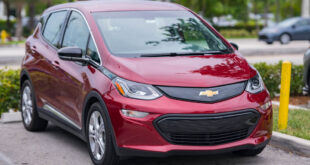Charging Electric Cars at Home: EV Owners As electric vehicles (EVs) become an increasingly popular choice among consumers, understanding how to charge electric cars at home has become a crucial skill for many. This guide provides a detailed overview of home charging options, installation considerations, benefits, and practical tips for EV owners.
Understanding Home Charging Options
Level 1 Charging
Level 1 charging utilizes a standard 120-volt outlet. It’s the most basic form of charging, providing about 2 to 5 miles of range per hour.
- Pros:
- No additional equipment needed; simply plug into a typical outlet.
- Affordable and accessible for most homes.
- Cons:
- Slow charging speed, not ideal for daily commutes requiring longer ranges.
Level 2 Charging
Level 2 charging requires a 240-volt outlet, which can be installed in your garage or driveway.
- Pros:
- Faster charging speeds, typically adding 10 to 60 miles of range per hour.
- Better suited for daily use and longer commutes.
- Cons:
- Installation costs for the charging station and electrical work may be higher.
Choosing the Right Charger
When selecting a home charger, consider:
- Charger Brands: Popular options include ChargePoint, JuiceBox, and Blink.
- Power Output: Measured in kilowatts (kW), choose a charger that meets your driving habits.
- Smart Features: Some chargers offer Wi-Fi connectivity for monitoring and scheduling charges.
Installation Considerations
Getting a Professional Electrician
Hiring a licensed electrician is crucial for a safe installation of a Level 2 charger.
- Assessing Electrical Capacity: Ensure your home’s electrical system can handle the additional load.
- Permits and Regulations: Check local laws and permits required for installation.
Location of Charger
Decide whether the charger will be installed indoors or outdoors, making sure it’s easily accessible and sheltered from the elements.
Costs of Home Charging
Initial Costs
The cost of purchasing a Level 2 charger varies, typically ranging from $500 to $1,500, including installation.
Operating Costs
Charging costs depend on local electric rates. On average, charging an EV at home costs about $0.10 to $0.30 per kWh.
Benefits of Charging at Home
Convenience
Charging at home means you can start every day with a full battery, eliminating the need for frequent visits to public charging stations.
Cost Savings
Home charging can be more economical compared to using public charging stations, especially if you charge during off-peak hours.
Tips for Efficient Home Charging
- Schedule Charging Times: Set your charger to work during off-peak hours to save on electricity costs.
- Know Your EV’s Battery: Understand when your vehicle’s battery is full to avoid overcharging.
- Consider Solar Panels: If possible, install solar panels to charge your EV with renewable energy.
- Keep Cables Organized: Invest in cable management solutions to keep your charging space tidy.
- Use a Timer: A timer can help automate your charging schedule and control costs effectively.
- Monitor Charging Sessions: Use apps to track charging times and costs.
- Opt for a Smart Charger: Choose chargers with smart features for remote monitoring and control.
- Maintain Your Charger: Regularly inspect and maintain your charger to ensure optimal performance.
- Educate Family and Guests: Teach others how to use the charging station safely and efficiently.
- Stay Updated: Keep abreast of EV-related news for advancements in charging technology.
FAQs on Charging Electric Cars at Home
- How long does it take to charge an electric car at home?
Charging times vary based on charger type and vehicle battery size; a Level 2 charger can charge most EVs overnight. - Can I install my home charger myself?
It’s recommended to hire a licensed electrician for safety and compliance with local regulations. - Is Level 1 charging sufficient for my needs?
Level 1 charging may be sufficient for short commutes, while Level 2 is advisable for longer daily drives. - What are the environmental benefits of charging at home?
Charging at home allows for using renewable energy sources, reducing your carbon footprint. - Are there any government incentives for home EV charging?
Many regions offer rebates or tax credits for the installation of home EV chargers; check local programs. - Will charging at home damage my battery?
No, modern EVs are equipped with technology to prevent overcharging and manage battery health. - What if I live in an apartment?
Discuss potential charging solutions with your landlord or look into shared charging stations within your complex. - How can I track charging costs?
Smart chargers often come with apps that help you monitor energy use and costs. - Can I use a power strip to charge my EV?
No, EV chargers should be plugged directly into a wall outlet or dedicated circuit to avoid risks. - Is it safe to charge my car outdoors?
Yes, as long as the charger is weatherproof and properly installed according to manufacturer guidelines.
Conclusion
Charging electric cars at home offers convenience, cost savings, and the comfort of starting each day with a full battery. With various home charging options available, understanding how to choose and install a charger is crucial for every EV owner. By following best practices and considering your driving habits, you can efficiently power your vehicle while contributing to a greener future.
As the market for electric vehicles continues to expand, being informed about charging solutions will ensure a seamless transition into the EV lifestyle. Efficient home charging can enhance your ownership experience, allowing you to focus on driving while feeling secure in your choice of sustainable transport. Make the most of your home charging experience and enjoy the many benefits of electric vehicle ownership.
 oto car insurance used car repair
oto car insurance used car repair
